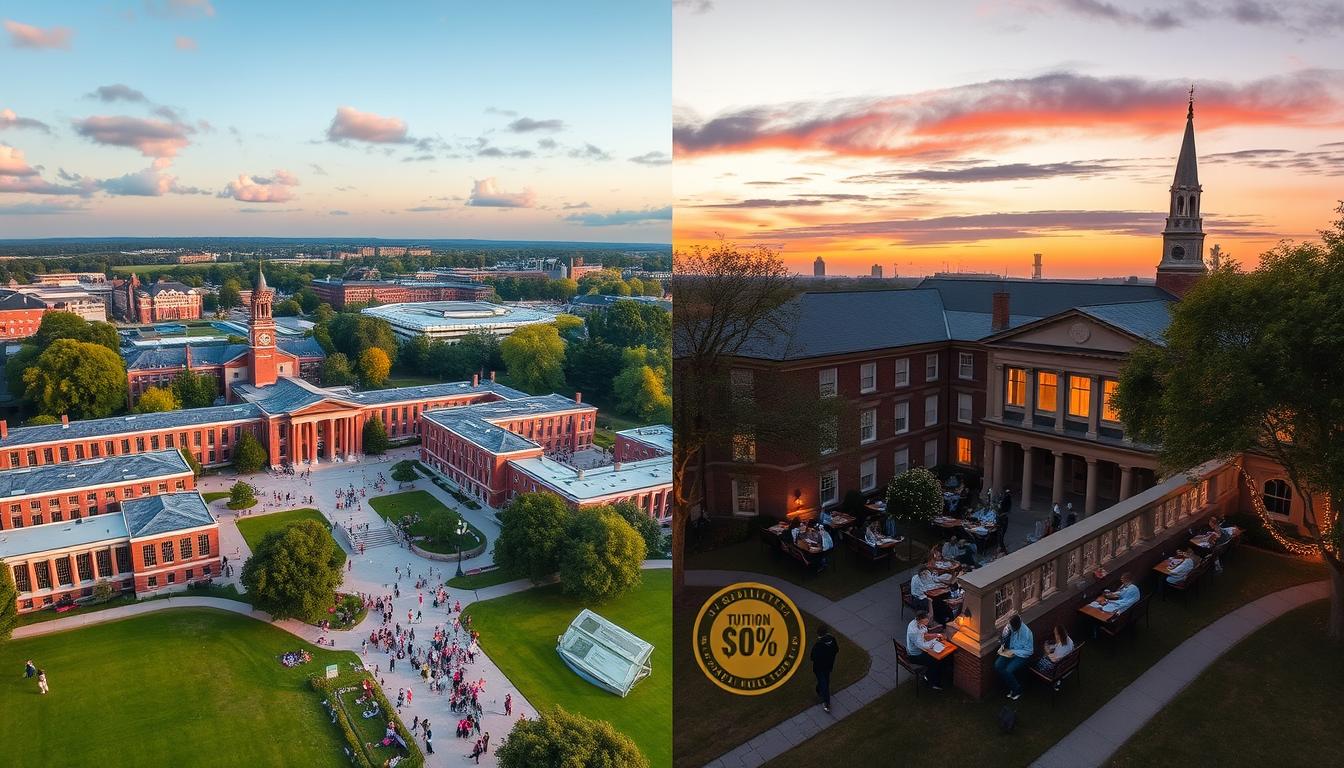When considering your higher education options, understanding the difference between public and private colleges is crucial. Each type of institution has its unique characteristics, including funding models, academic offerings, and overall quality. Public vs. private universities often emerge as a central dilemma for prospective students, particularly concerning affordability and the potential for quality education. According to the National Center for Education Statistics, in-state students at public colleges enjoyed an average tuition cost of just $8,487 during the 2020-21 academic year, significantly lower than the $30,065 average for private colleges. While public institutions frequently boast a broader range of program offerings—such as Purdue University with its more than 200 majors—private colleges may provide an intimate learning environment with smaller class sizes. As you explore your options, it is essential to analyze how these differences affect your academic reputation, campus life experiences, and long-term financial outcomes.
Understanding the Basics of Public and Private Colleges
Grasping the fundamentals of public and private colleges requires examining how they operate and their varying funding sources. Public colleges receive significant financial support from the state, which allows them to offer lower tuition rates, especially to residents. This state funding affects their campus facilities, which often include a wide range of resources due to larger budgets. Private colleges, on the other hand, depend largely on tuition, donations, and endowments for their financial stability, resulting in a higher cost of attendance compared to public options.
Funding Sources and Operational Differences
Understanding how public and private institutions obtain funding reveals key differences in their operations. Funding for public colleges comes primarily from government sources, which enables them to maintain lower tuition costs. The average net price at these institutions for the 2022-2023 academic year is approximately $19,250. Private colleges tend to rely on private donations and endowments, leading to an average net price of around $32,800 for the same period. This financial model means public colleges can serve larger student bodies, often resulting in greater diversity, while private colleges may cultivate a more personalized atmosphere through smaller intake sizes.
Average Enrollment and Class Sizes
Enrollment figures and class sizes at public and private colleges exemplify the campus life differences between these institutions. Public colleges often accommodate over 12,200 students on average, resulting in larger class sizes that can lead to less individual attention from faculty. In contrast, private colleges average about 2,548 students, which allows for smaller class sizes and improved faculty-to-student ratios. Such environments encourage closer relationships between students and faculty, fostering discussions around diversity and inclusion within a more intimate academic setting.
The Cost of Attendance: Analyzing the Difference Between Public and Private Colleges
The financial landscape of higher education presents distinct contrasts between public and private colleges. Understanding these differences can empower you to make informed decisions about your academic future. Key aspects such as tuition rates, financial aid availability, and long-term costs and outcomes should be carefully considered to navigate this complex terrain.
Tuition Disparities
Public universities typically boast lower tuition rates, thanks to government subsidies that significantly reduce costs for in-state students. For the 2022-23 academic year, average tuition for public institutions reached approximately $9,800. In contrast, private nonprofit colleges had a much higher average tuition of $40,700. Out-of-state students at public institutions often encounter significantly elevated rates, challenging the notion that public universities universally offer affordability.
Financial Aid Availability
Financial aid plays a crucial role in the overall cost of attendance. Private colleges generally allocate more funds for financial aid, driven by generous alumni donations and substantial endowments. This aid can significantly reduce the financial burden, making these institutions more competitively priced upon graduation. Additionally, scholarship opportunities are more prevalent in private colleges, with many students receiving an average of 48% off their tuition. Such financial support can result in a comparable or lower cost of attendance when factoring in available resources.
Long-Term Costs and Outcomes
When considering long-term costs and outcomes, private colleges often yield a greater return on investment. Studies indicate that graduates from private universities tend to have higher job placement rates and average salaries compared to those from public institutions. Graduation rates reflect this trend, with private colleges exhibiting a four-year graduation rate of about 64%, compared to just 37% for public colleges. Although the initial tuition at private institutions may be higher, the overall financial landscape—considering graduation and career success—may align better with your long-term goals.

| Institution Type | Average Tuition (2022-23) | Average Financial Aid Discount | Four-Year Graduation Rate | Job Placement Rate |
|---|---|---|---|---|
| Public Colleges | $9,800 | Varies | 37% | Varies |
| Private Nonprofit Colleges | $40,700 | 48% | 64% | Higher |
Conclusion
In summary, the distinction between public vs private colleges encompasses several important factors that significantly impact your education choices. With nearly 6,000 colleges and universities in the United States, understanding these differences can help you identify the best fit for your academic journey. Public colleges often boast affordability due to state funding, making them an appealing option for in-state students seeking lower tuition rates. Their diverse programs and larger campus communities also provide a rich tapestry of extracurricular activities and social experiences.
On the other hand, private colleges tend to offer a more tailored educational experience, characterized by smaller class sizes and personalized attention from professors. This can greatly enhance your learning environment and academic support system. Additionally, while private universities may charge higher tuition, they often present robust merit-based and need-based financial aid options that can make them financially feasible for many students. As you weigh your options, it’s crucial to consider how factors like class size, financial aid availability, and campus experiences align with your career prospects and educational aspirations.
Ultimately, whether you lean toward public or private institutions, understanding the implications of each option allows you to make informed decisions that will shape your future. Consider the totality of the educational experience you desire and how it relates to your long-term goals. A thoughtful approach to these criteria will not only ensure a fulfilling college experience but also pave the way for successful career outcomes in your chosen field.

